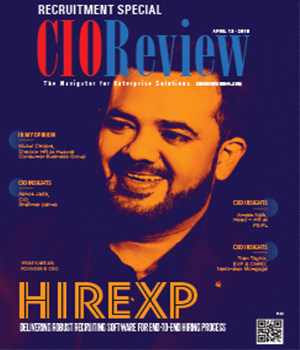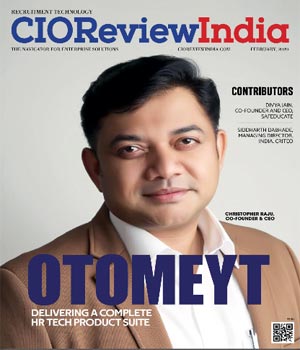Gender Diversity & Equality Beyond 2018: Building a More Secure Future
By Rituparna Dasgupta, Regional Leader, Global Talent & Development COE at General Motors International | Friday, 02 November 2018, 07:14 IST
 Diversity and inclusion have dominated the global gender debate since 20th century. In India, however, this is a more recent phenomenon; to be more specific post ‘The Companies Act of 2013’—which paved way for a wider improved statistics of women in education and workforce. A KPMG report states these as—45% university women graduates and 27% women in Indian workforce; and yet when compared globally, Indian organizations have been rather slow to incorporate this constructive change. So, what kind of value proposition does a gender diverse workforce bring? Notably, gender diversity, within an organization, is critical to a nation’s growth and development as such. The International Finance Corporation (IFC)report states that an organization will experience better productivity and a profitable balance-sheet, when women are given better work opportunities. Organizations investing in women workforce often find that they have the enhanced scope of staff retention, innovation, and better access to talent and new markets. When women are availed greater income and financial independence, both women and men are empowered to increase household spending on health, children’s education and nutrition. This in turn enables an improved contribution to the national GDP. The contribution by women towards the national GDP holds the potential to substantially change the social and economic landscape. However, this dynamic progress is dependent on factors like enhanced job opportunities, pay parity for women, work life balance, well supported by corporate and government. In this regards, Iceland has performed very well. It has been ranked the best by world economic forum for gender equality for nine years in a row. In fact, it introduced a law on March 8th 2017 which makes it illegal for companies to pay women less than men. The Icelandic law has enforced pay parity between genders, which finally came into effect on January 1, 2018, aiming to eradicate the gender pay gap by 2022. No wonder, then, their governance model has rendered the Nordic country as the best in the world for gender equality. Iceland serves as a case in point, proving that gender equality with respect to pay parity is possible if right intention and architecture by the government machinery and corporate sector are deployed.
Diversity and inclusion have dominated the global gender debate since 20th century. In India, however, this is a more recent phenomenon; to be more specific post ‘The Companies Act of 2013’—which paved way for a wider improved statistics of women in education and workforce. A KPMG report states these as—45% university women graduates and 27% women in Indian workforce; and yet when compared globally, Indian organizations have been rather slow to incorporate this constructive change. So, what kind of value proposition does a gender diverse workforce bring? Notably, gender diversity, within an organization, is critical to a nation’s growth and development as such. The International Finance Corporation (IFC)report states that an organization will experience better productivity and a profitable balance-sheet, when women are given better work opportunities. Organizations investing in women workforce often find that they have the enhanced scope of staff retention, innovation, and better access to talent and new markets. When women are availed greater income and financial independence, both women and men are empowered to increase household spending on health, children’s education and nutrition. This in turn enables an improved contribution to the national GDP. The contribution by women towards the national GDP holds the potential to substantially change the social and economic landscape. However, this dynamic progress is dependent on factors like enhanced job opportunities, pay parity for women, work life balance, well supported by corporate and government. In this regards, Iceland has performed very well. It has been ranked the best by world economic forum for gender equality for nine years in a row. In fact, it introduced a law on March 8th 2017 which makes it illegal for companies to pay women less than men. The Icelandic law has enforced pay parity between genders, which finally came into effect on January 1, 2018, aiming to eradicate the gender pay gap by 2022. No wonder, then, their governance model has rendered the Nordic country as the best in the world for gender equality. Iceland serves as a case in point, proving that gender equality with respect to pay parity is possible if right intention and architecture by the government machinery and corporate sector are deployed.
Often, women in workplace are subjected to ‘you can’t have it all’ ideology. While it is true that one cannot manage everything seamlessly, applying the principle only to women alone is discriminatory. What is more important is the realization that as life changes, so do the priorities. Thus, rather than pushing a certain section basis their gender, corporates and governments should focus on creating an ecosystem where a smooth transition is possible, enabling women to reprioritize as per the need of the hour. Next, integrating gender diversity into job landscape adds significantly to the growth of the organization and economy. True gender diversity is when women are proportionally represented at all levels in an organization. Though we invest significantly in attracting diverse talent, creating an inclusive workspace is what needs more focus. For this, closing the gender gap must be a central feature of any plan. While work life balance is cited as the most common culprit for women turnover, one must look at recognizing individual aspirations, equality, pay parity and a climate of inclusion. And all of this would need consistency and persistence in the long run, to see tangible results. However, it should be noted that gender diversity is nota numbers game alone. Rather it should be evaluated basis the life chances availed to women, factoring in the challenges of ascending the executive ladder and at every other stage of their professional development. Fostering gender equality at the very foundation of the organization, enabling smoother transition to higher roles, providing Mentoring, discouragement of gender-biasness and investment in career advancement of women, should be focused upon. Women no longer are opting for conventional roles. Instead they are looking out for new avenues, creating new benchmarks and making history with progressive choices. India is witnessing this sea of change with many women now earning their livelihoods as lady technicians positioned on assembly lines in production units, spare parts dealerships, as Ola cab drivers and in few instances even as lady truck drivers—though a rare occurrence, besides which women are also driving their family businesses and start—ups.
Early on we had one Sudha Murthy, who dared to step beyond the conventional threshold— today we have many. The time is now ripe for the country and the corporate sector to benefit from this wave, by curtailing occupational segregation and unlocking significant productivity profits and economic growth. In fact, as one Accenture case study reports, Indian women today have much better chances than their predecessors—“today’s female university students in developed markets could be the first generation in history to see the gender pay gap close in their professional lifetimes—if this Class of 2020 makes strategic choices and gains more digital skills, and if businesses, governments and academia provide crucial support.” In fact, the 27% women workforce of the country if given the right resources and opportunities have the ability to provide a road—map for other aspiring career women. It will need Businesses and Governments to join hands in cementing firm policies and approaches with respect to gender diversity and equality. It will require rethinking of social norms & attitudes to enable work life balance, reevaluation of performance models and challenging the leadership to bring gender equality in the DNA of the organization. This will reflect not just in a healthier society but also the national economy. Better jobs for women, benefit not just the individuals but their families, communities, companies and economies as well.
CIO Viewpoint
CIO: Collective Leadership --from Me to We
By By Ashok Jade, CIO, Shalimar paints
CXO Insights
Chatbots: Employees Of The Future
By Sathyanarayana Kabirdas, Director – Mobility Research, Frost & Sullivan
Jobs Of Tomorrow - How Startups Are Enabling...
By Divya Jain, Co-Founder and CEO, Safeducate
Gender Diversity & Equality Beyond 2018:...





